Pioneering partnerships for advanced healthcare
Leading scientists at the 2nd Global Innovation Summit in Kyoto, Japan
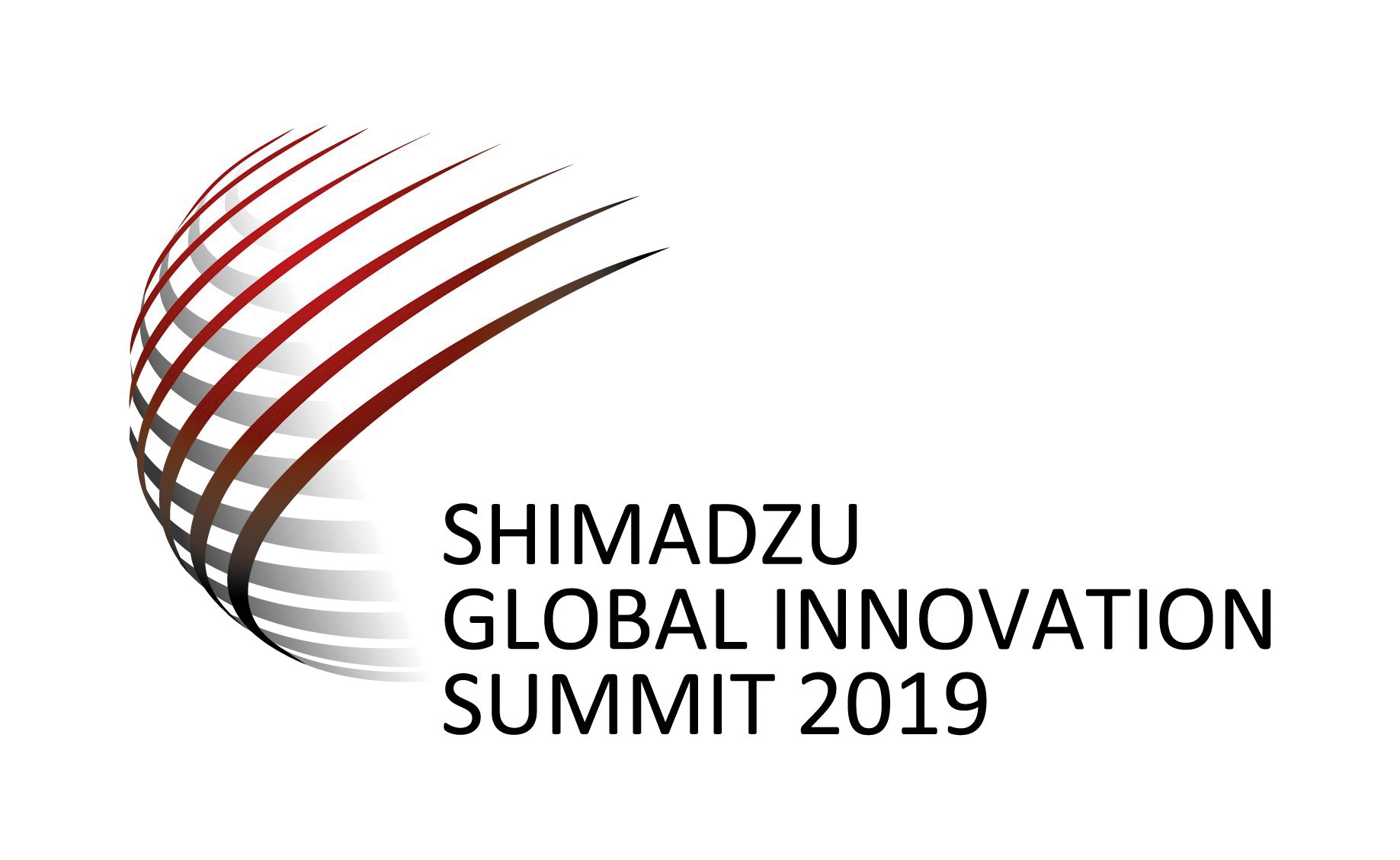
Over 95 leading scientists from all over the world attended the second Shimadzu Global Innovation Summit. Two days in July focused on “Pioneering Partnerships for Advanced Healthcare – Synergy between Analytical & Medical.” This topic deals with collaborative improvement of methods for early detection of diseases, addressing both natural scientists and physicians.
Shimadzu, being one of the few manufacturers of both Analytical Measurement Technology and Medical Technology, has for years created synergistic effects between analytical instrumentation and the health sector, for example through highly developed analytical systems for medical research. However, the synergies from the technological integration of medical technology as well as analytics can be taken even further. They offer great potential to provide solutions for diseases that pose the greatest challenges today, such as the diagnosis and treatment of cancer, dementia and endocrine disorders.
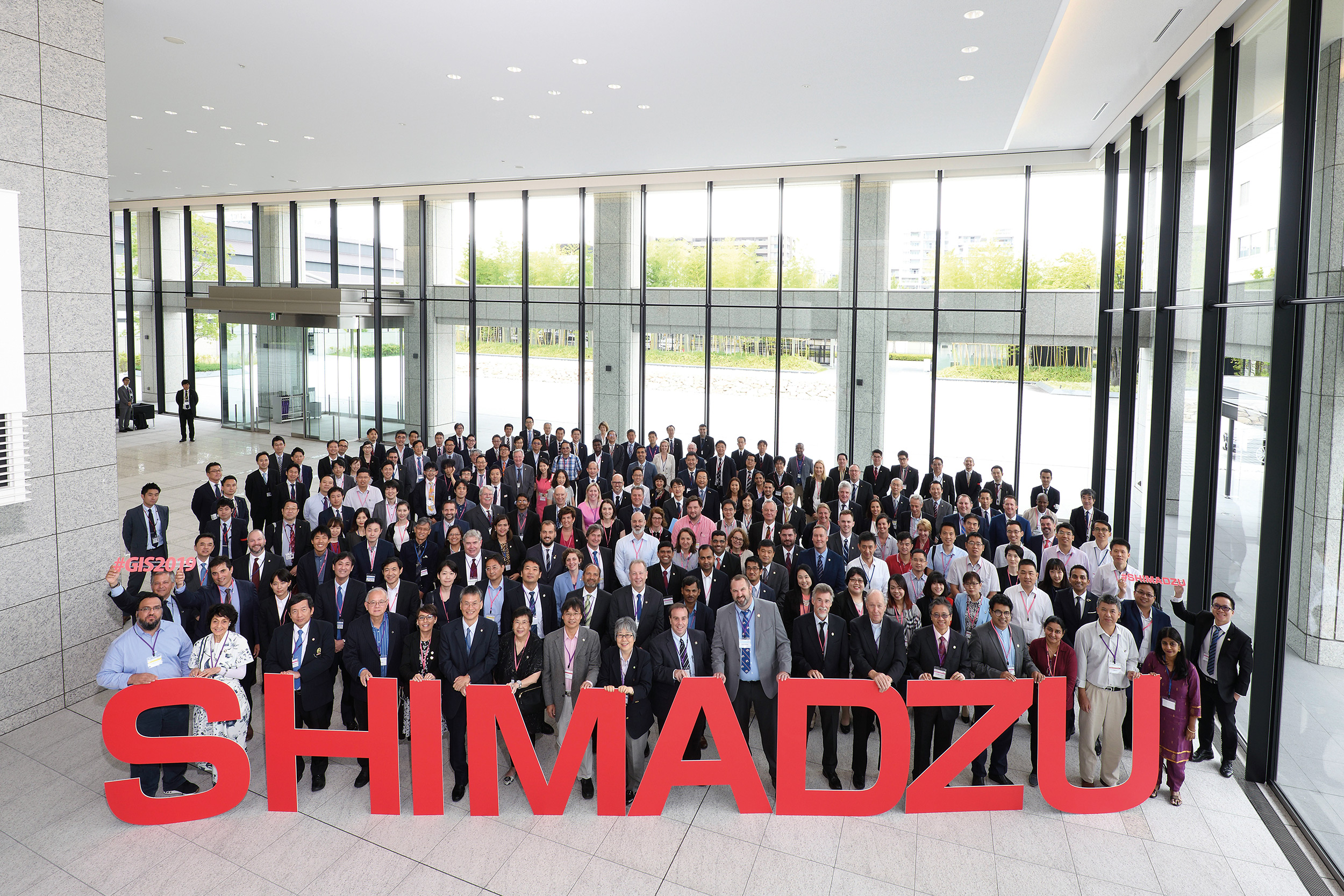 Group photo of participants in the Global Innovation Summit 2019
Group photo of participants in the Global Innovation Summit 2019
Two examples: The combination of an angiography system with LC-MS can be used to diagnose primary aldosteronism, a cause of high blood pressure. Furthermore, the NIR-Pit (Near Infrared Photoimmune Therapy) can be used in cancer therapy. This new method is based on a near-infrared camera system combined with an LC-MS system.
The fact that the Summit was opened by Dr. Teruhisa Ueda, President and CEO of Shimadzu, is not only a sign of the significance of this event but also demonstrates that the implementation of the corporate philosophy of “contributing to society through science and technology” has become a standard for research and development.
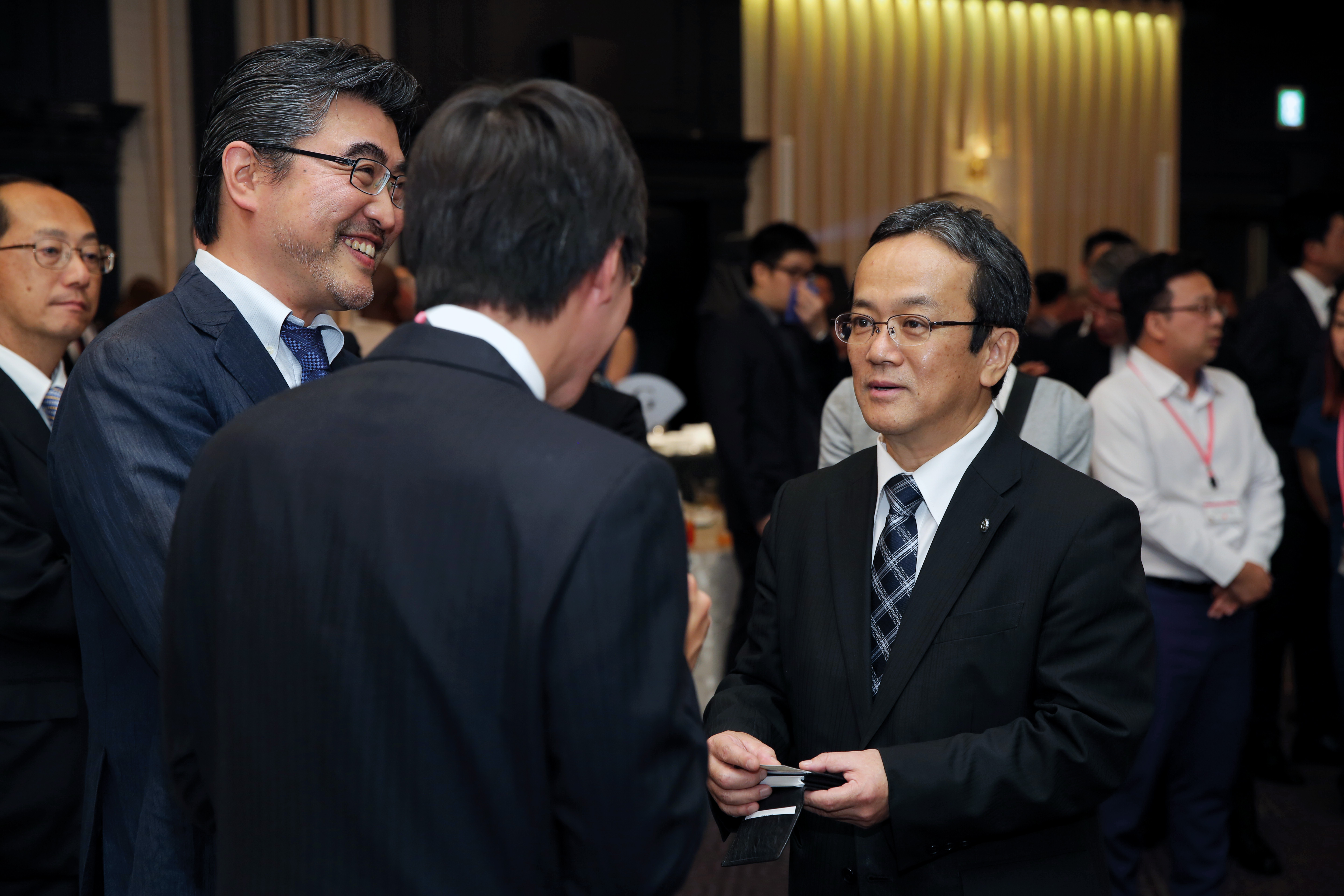 Dr. Teruhisa Ueda, President and CEO, Shimadzu Corporation
Dr. Teruhisa Ueda, President and CEO, Shimadzu Corporation
At the same time as the Innovation Summit, the openings of the Healthcare R&D Center and KYOLABS were announced. Shuzo Maruyama, Director of the Analytical & Measuring Instrument Division, used a short presentation and video to give participants their first impression. With the KYOLABS, Shimadzu offers an environment in which companies can conduct applied research on their own or together with Shimadzu – always striving to achieve healthcare synergies with medical technology and analytics.
The speakers, lectures and poster topics would make some organizers of other events envious. Furthermore, the open exchange of results and the dialog between analysts and physicians showed the potential of this event and highlighted the importance and synergistic effects inherent in both disciplines.
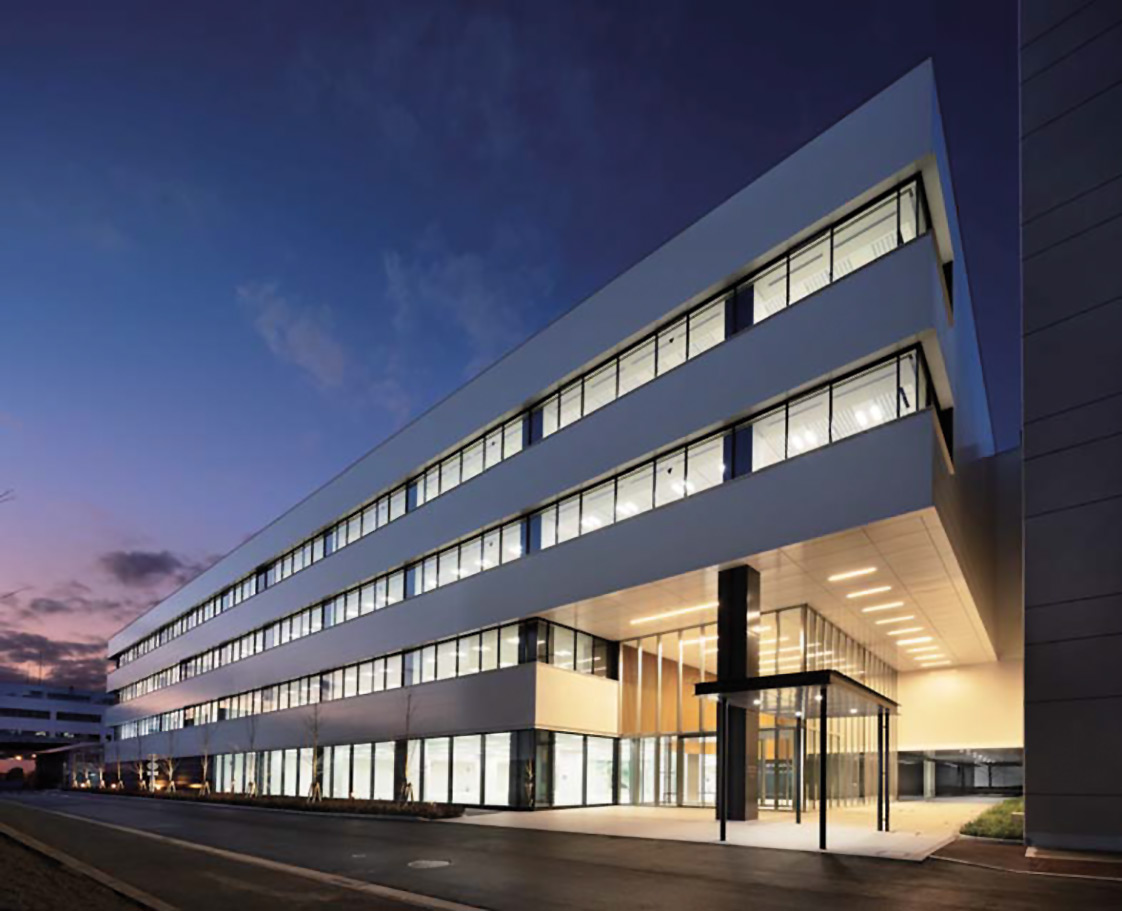 New Healthcare R&D Center
New Healthcare R&D Center
The importance of cooperation for science and industry
The keynote speakers were Kevin Schug (University of Texas, USA) and Alex R. Rai (Columbia University, USA), who have been working together since the first Innovation Summit in 2017. Kei Takase (Tohoku University, Japan) with his topic “Development of Interventional Radiological Treatment of Primary Aldosteronism Utilizing Rapid Aldosterone Analysis” emphasized that analytics and medicine are equally important for high-tech medicine.
Mark Horrigan (Austin Health, University of Melbourne, Australia) reported on the existing cooperation between Austin Health and the Shimadzu Medical Division. He was followed by Philipp Scherer (UT Southwestern, USA) who spoke on the use of LC-MS for the analysis of metabolites and the detection of critical metabolites from tissue samples, especially from adipose tissue.
Poster presentations expand the summit’s topics
The lunch speech was given by Prof. Maeda-Yamamoto of the National Agriculture and Food Research Organization on the healing and invigorating power of green teas. Afterwards, Shosaku Murayama of iPS Portal Inc. added greater emphasis to the laboratory of the future. In the afternoon, Koichi Tanaka, Nobel Laureate in Chemistry 2002, joined the participants and discussed their posters and research.
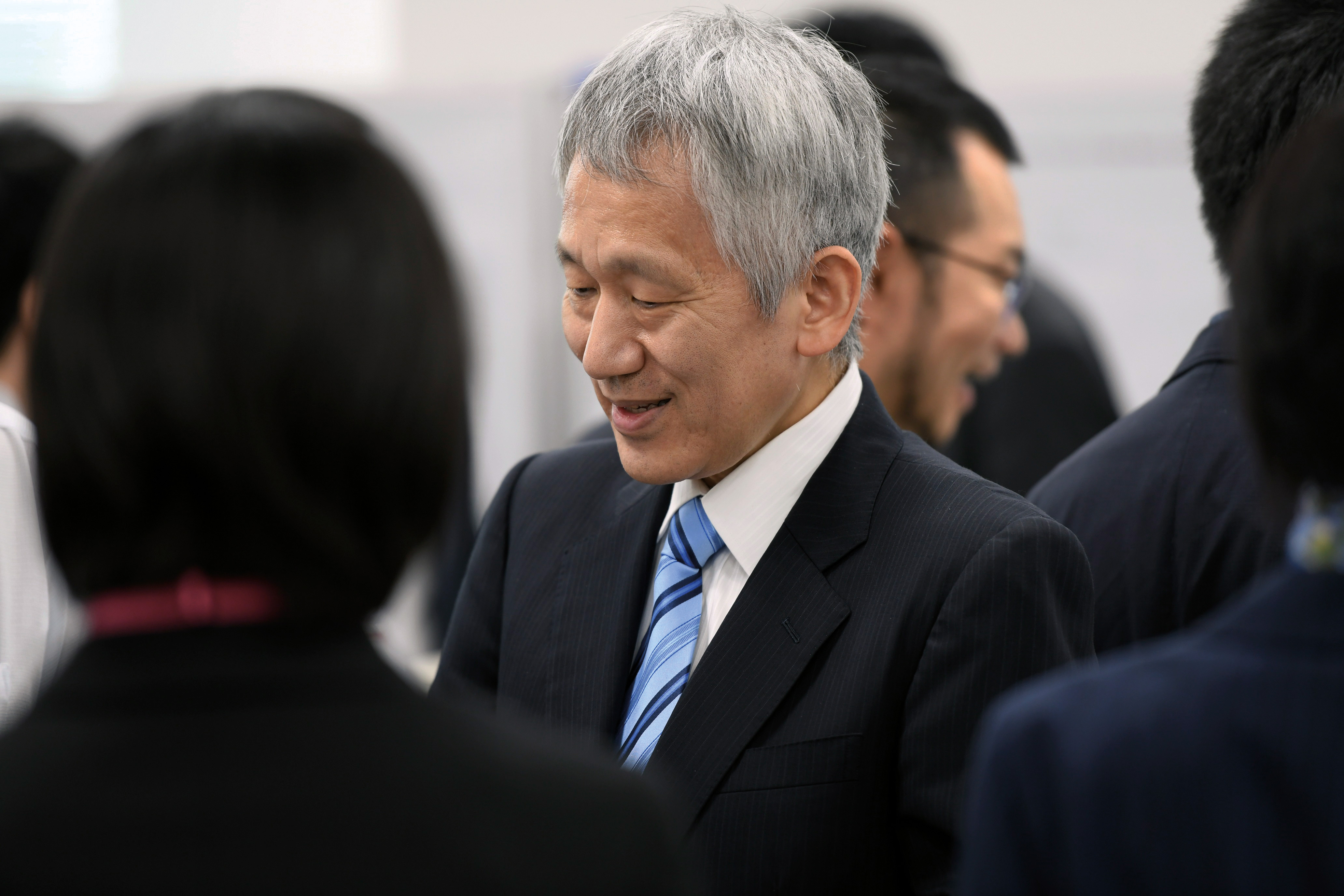 Koichi Tanaka (General Manager Mass Spectrometry Research Laboratory, Shimadzu Corporation)
Koichi Tanaka (General Manager Mass Spectrometry Research Laboratory, Shimadzu Corporation)
An overview of the individual posters revealed a number of new applications. With the further development of mass spectrometry as a detection technique for liquid or gas chromatography, and the considerable increase in knowledge in biochemistry and protein chemistry, a large number of new applications have been developed. They enable the determination and evaluation of biomarkers for numerous serious diseases and their early detection, as well as the deduction of a targeted therapy. The journey to the often-invoked personalized medicine seems to be shortening.
Mass spectrometry in particular has long been established in a wide range of applications and is now an indispensable tool in research. Moreover, classical methods have neither lost their place nor their importance in research routine.
Instrumental analytics in medical applications
The last session of the day was once again a topical attraction. Teo Eng Kiong (Changi General Hospital Singapore) gave an interesting insight into the use of analytical methods in high-performance medicine. Stanley Hazen (Cleveland Clinic, USA) reported on the use of MS in biomedical research for the diagnosis of cardiovascular diseases. Finally, Colin Masters (University of Melbourne, Australia) spoke on the subject “The Molecular Origins of Alzheimer’s Disease: When does it Start and What Strategies for Primary Prevention?”
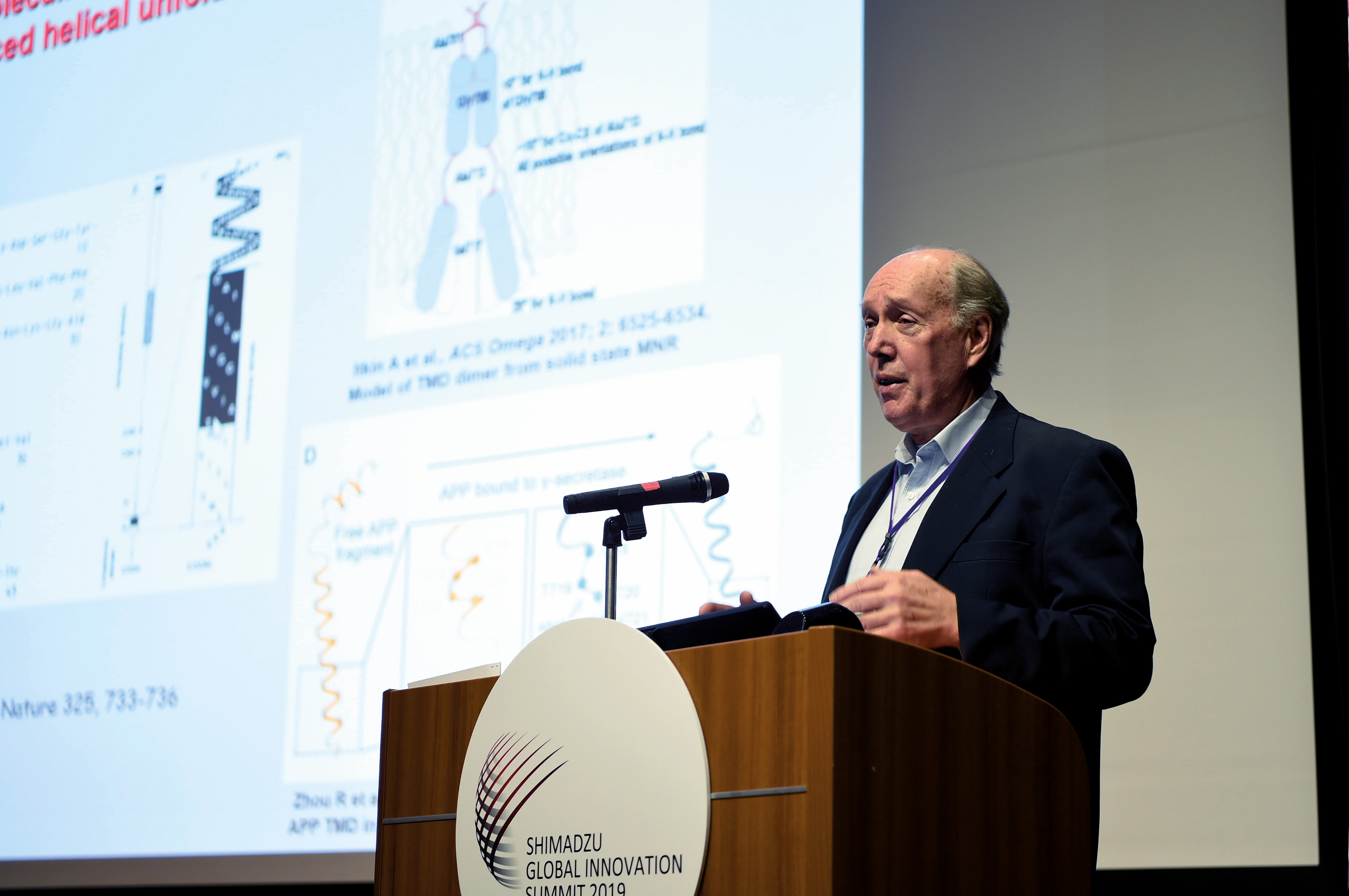 Colin Masters (University of Melbourne, Australia)
Colin Masters (University of Melbourne, Australia)
It is important to detect Alzheimer’s disease as early as possible in order to start appropriate therapy approaches in time. A number of renowned researchers and institutions are working on this subject, and there are opportunities for progress in the near future. With Colin Masters’ presentation, the current state of research in Alzheimer’s detection was clearly described, and a multitude of open questions were highlighted that could be discussed during the Summit.
Networking & event, poster-awards
Akira Nakamoto, Chairman of the Board of Shimadzu, welcomed to the gala dinner and encouraged dialog between scientists and Shimadzu Research & Development staff to benefit from each other’s inspiration and technology.
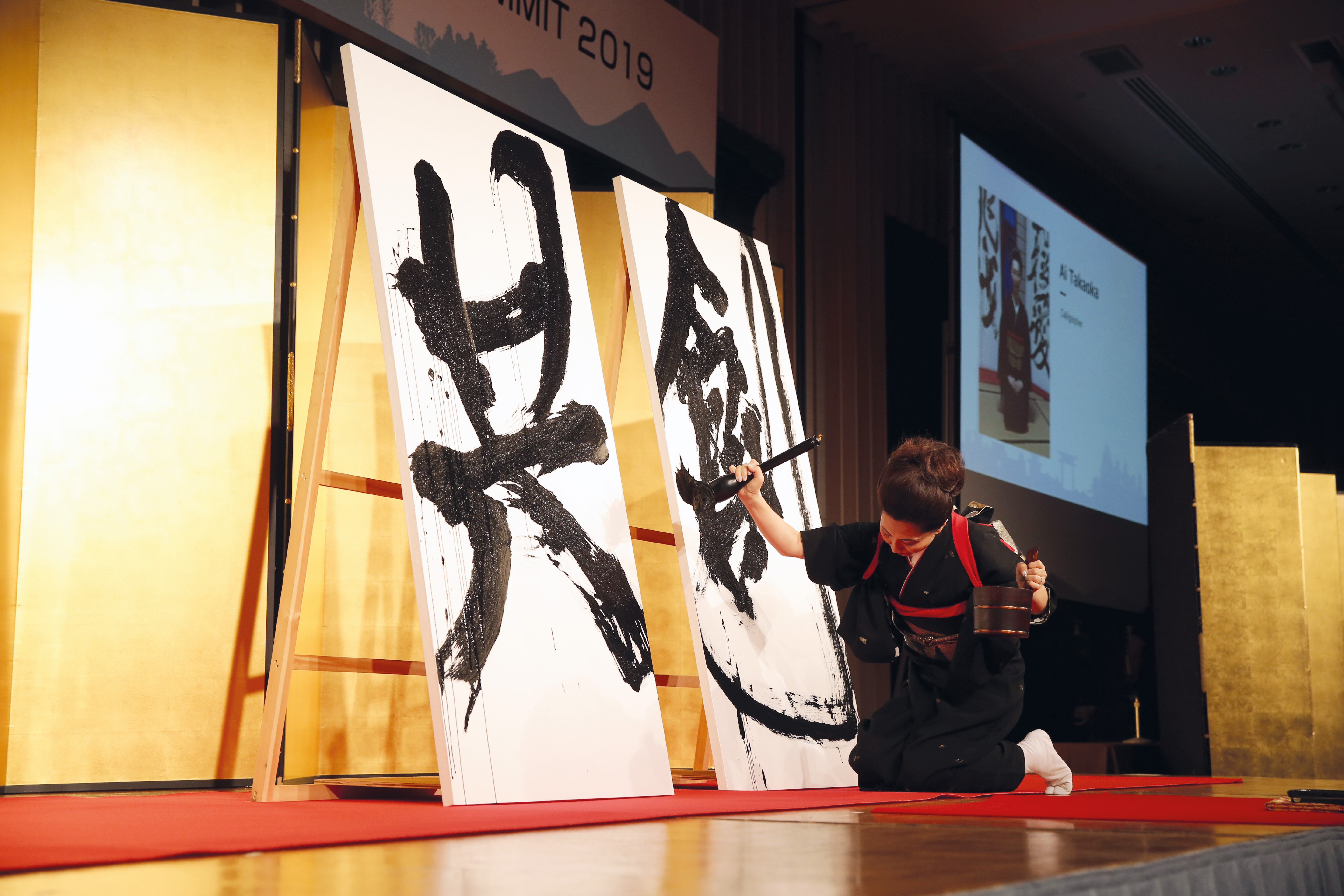 Ai Takaoka, a famous calligraphy artist, celebrated the creation of the characters for ‘Synergy/Co-Creation’, a small but impressive insight into the host’s tradition and culture
Ai Takaoka, a famous calligraphy artist, celebrated the creation of the characters for ‘Synergy/Co-Creation’, a small but impressive insight into the host’s tradition and culture
Ai Takaoka, a famous calligraphy artist, celebrated the creation of the characters for “Synergy/Co-Creation”, a small but impressive insight into the host’s tradition and culture.
One of the highlights of the evening was the selection of the winner of the poster award. From the numerous posters, the jurors chose six, including two from Europe: Silvia Giordano from Italy and Tiffany Porta Siegel from the Netherlands. All award winners were invited to present their research topic in a short presentation the following day.
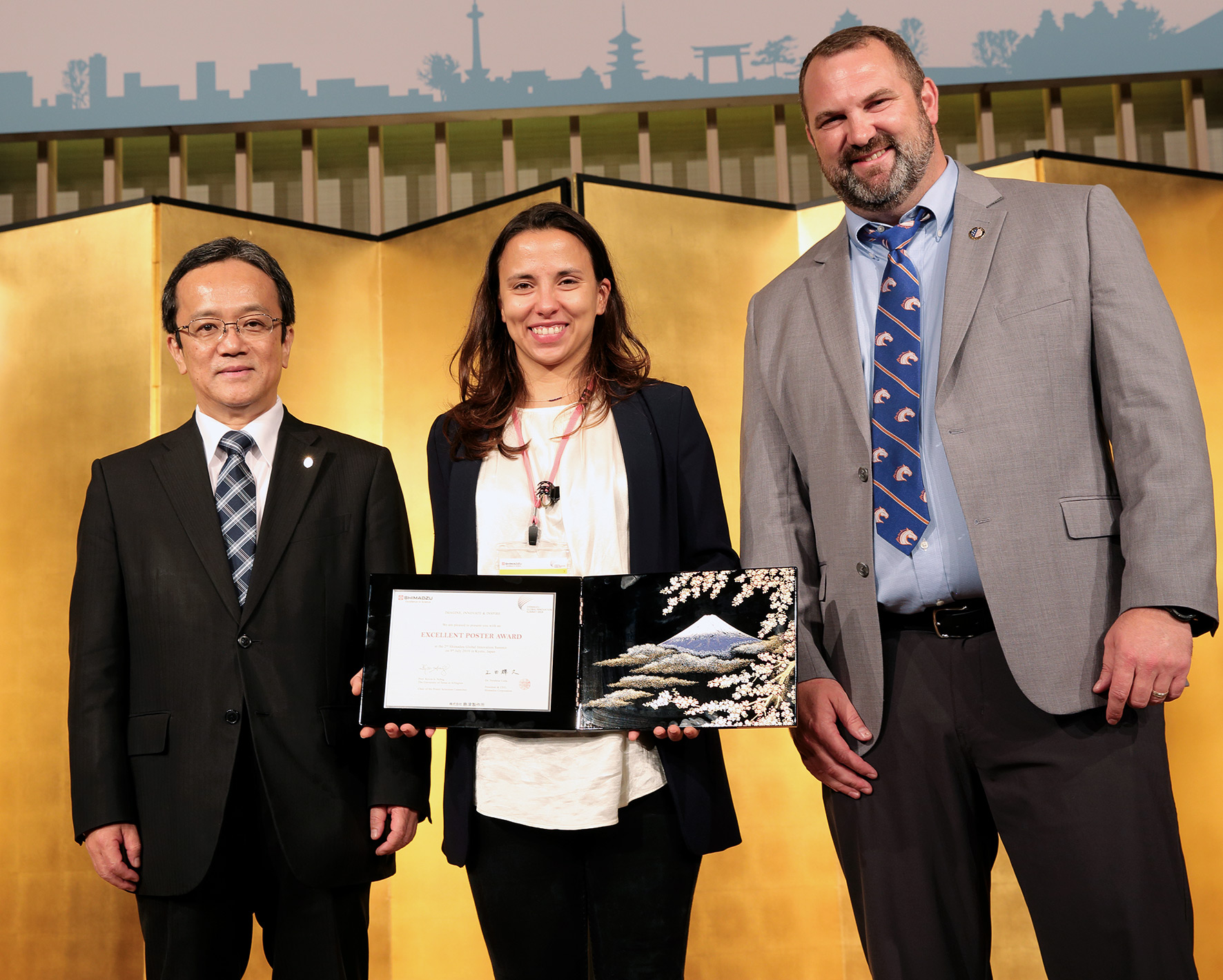 Silvia Giordano (Mario Negri Institute, Milan, Italy) with her Poster Award
Silvia Giordano (Mario Negri Institute, Milan, Italy) with her Poster Award
Excellence in Science
The second day started with “Excellence in Science Workshops”: Giancarlo la Marca (Meyers Children’s Hospital, Italy) started with the topic “Next Generation of Disease Biomarkers”, with focus on newborn diagnostics; Yi Chen (Chinese Academy of Science, China) followed with the topic “Towards the Intelligence of Analytical Instruments.”
The third workshop “Neuroimaging with NIRS – Fundamentals to Hyperscanning with Emerging New Directions for Autism” by Joy Hirsch (Yale School of Medicine, USA), Ilias Tachtsidis (University College of London, UK) and Jung Li (South China Normal University) was a vivid, multi-national presentation. They showed the basics, possibilities and chances of fNIRS technology and presented results of their investigations. fNIRS is short for Near-Infrared Spectroscopy, an imaging technology that visualizes brain functions.
Wasan Udayachalerm (King Chulalongkorn Memorial Hospital, Thailand) emphasized the importance of cardiac catheters for minimally invasive procedures and the opportunities for closer interaction between analytics (LCMS) and medical technology (Trinias Unity, an image processing technology for highly complex surgical procedures). The lunch break was reserved for presentations from Research & Development, providing another opportunity to speak directly to the engineers and to gain insight into current projects. The closing words came from Kunimasa Ito, General Manager of the Medical Division. After a visit to the production facilities and the Shimadzu Science Plaza, all participants met in the Heian Jingu Shrine Hall for another networking dinner to establish and strengthen contacts.
The third day was reserved for a visit to the Shimadzu Memorial Hall, the Okura Sake Museum and the Byodin Temple. Hence, the participants could visit a (certainly too small) part of Kyoto, the former capital, and get an impression of Japanese culture and tradition, providing an incentive for some to visit again.
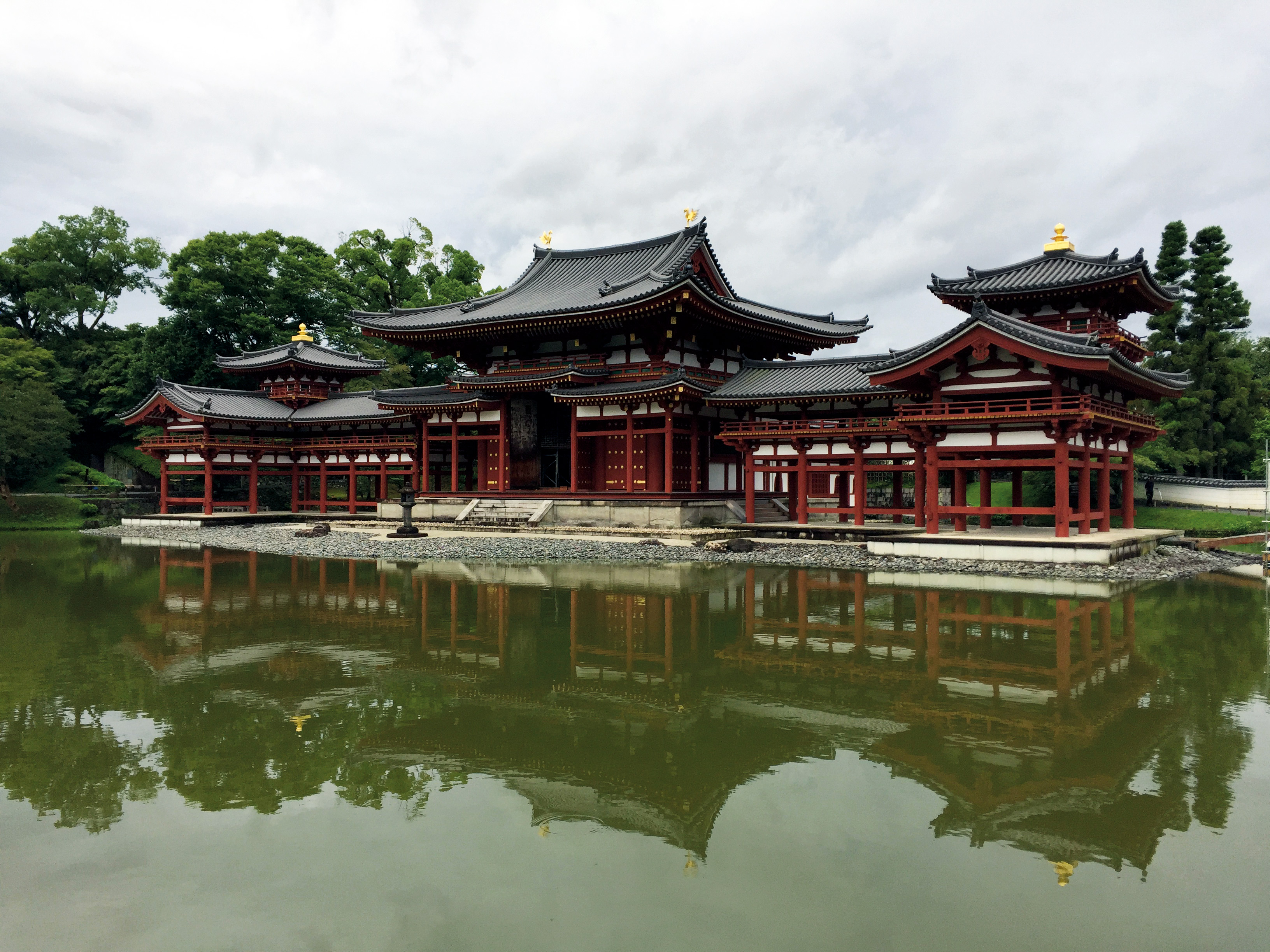 Byodin Temple Kyoto, Japan
Byodin Temple Kyoto, Japan
What remains beyond the Global Summit?
Participants are often asked: what remains and what do they take away? A comprehensive answer is complex.
Technical developments thrive on being triggered by inspiration and exchange, as well as on recognizing necessities and possibilities. This requires direction and structure – both framework conditions as set out in the Global Innovation Summit. The willingness to collaborate in the search for new approaches for clinical research and diagnostics and to think beyond the existing barriers between classical analytics and medical technology was evident among all participants.
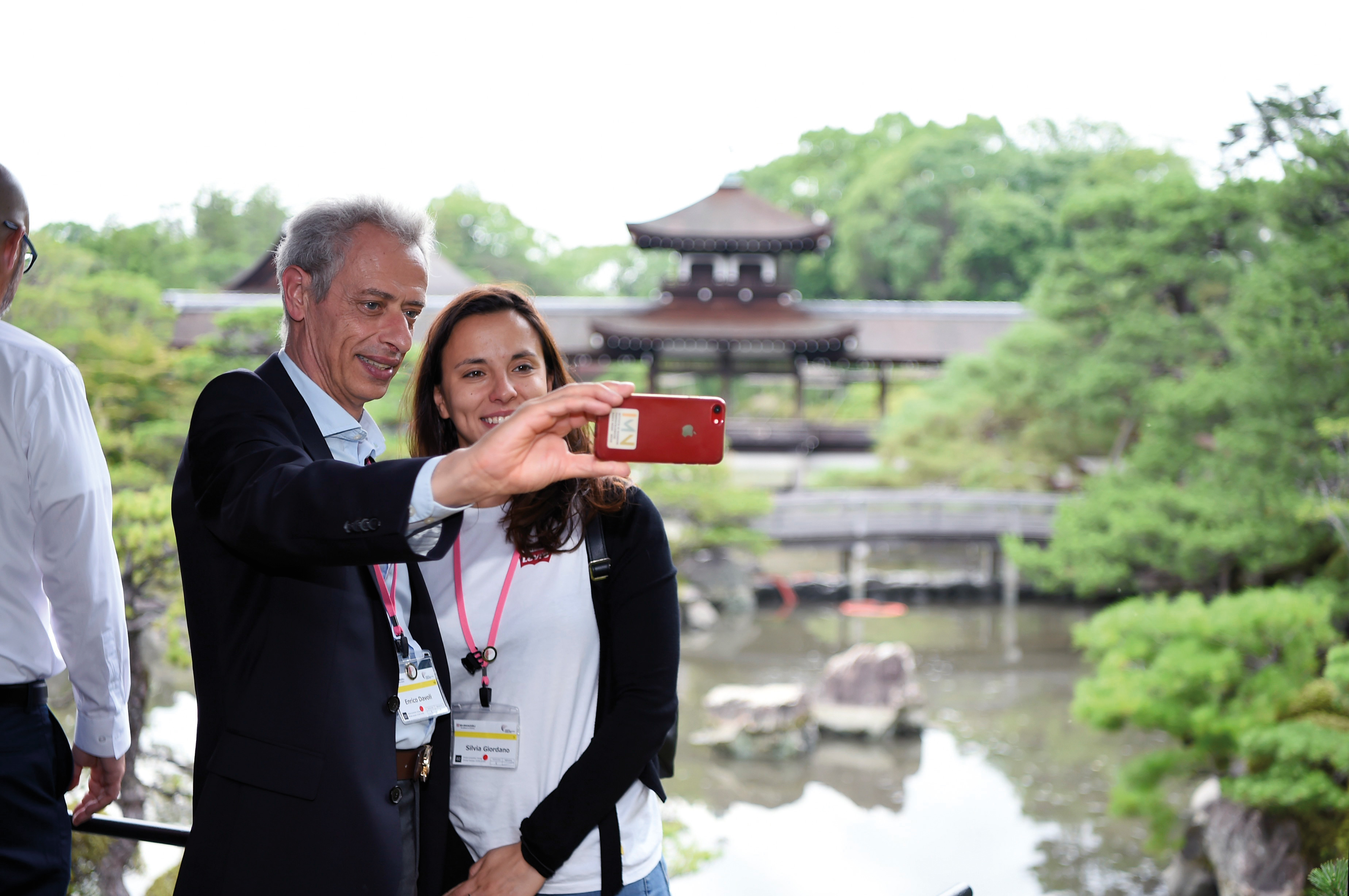 Silvia Giordano and Enrico Davoli (Mario Negri Institute, Milan, Italy) at the Networking Dinner
Silvia Giordano and Enrico Davoli (Mario Negri Institute, Milan, Italy) at the Networking Dinner
In addition, professional and personal encouragement plays an important role in this context: the feeling of being part of a global community and of this truly international event is inspiring. Rarely could so many discussions be experienced beyond the boundaries of areas of expertise. New contacts have been made and many projects will be followed up.
The synergies between analytics and medical technology are obvious. Many of the presentations demonstrate successful cooperation between the two areas, whose opportunities and potential are already concrete and are more than just a vague idea.
Shimadzu as a global company follows a long tradition of analytics and medical technology and continues the innovative spirit of its founder and visionary Genzo Shimadzu. With its current developments and projects, Shimadzu as a company occupies a top position in many areas and has the ability to actively shape the growth market.
Working together with customers and with leading scientists as partners, new requirements arise for Research & Development to create new “Excellence in Science” technologies and solutions in order to continuously “contribute to society through science and technology.”